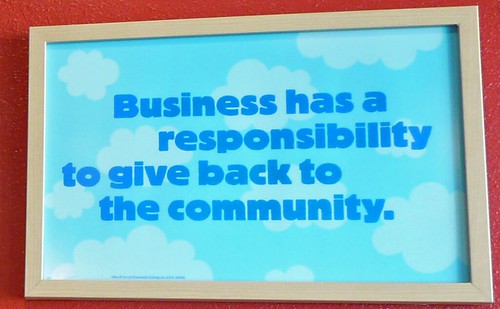-
Wind power could cut China’s emissions by 30%, US study finds | Environment | guardian.co.uk
China’s energy needs are expected to double by 2030, but a study in the journal Science says the country could produce 30% less CO2 if it uses wind power to meet them
-
House OKs $1B for Wind Tech Development & Demos: What’s In It for Innovators?
Wind Energy Research and Development Act of 2009. The bill, which cleared the House late Wednesday in a voice vote, would authorize $200 million a year for five years starting in 2010 for a grant program out of the Department of Energy for wind research and demo projects.
-
Panasonic: New LED bulbs shine for 19 years | Crave – CNET
Panasonic has launched a new household LED lightbulb in Japan that it says lasts up to 19 years – 40 times longer than incandescent bulbs
-
NSIDC: Arctic sea ice extent falls below 2005 minimum, now third lowest on record « Climate Progress
Atmospheric circulation patterns in August helped spread out sea ice, slowing ice loss in most regions of the Arctic. NSIDC scientists expect to see the minimum ice extent for the year in the next few weeks. While this year’s minimum ice extent will probably not reach the record low of 2007, it remains well below normal: average ice extent for August 2009 was the third-lowest in the satellite record. Ice extent has now fallen below the 2005 minimum, previously the third-lowest extent in the satellite record.
-
Surprises abound in first Global Cleantech 100 ranking | Cleantech Group
A first Global Cleantech 100 list was jointly released today by the Guardian newspaper and the Cleantech Group, illustrating what sectors of clean technology are attracting the most attention, and where.
-
2GW Power plant capable of powering over 3 million Chinese homes being developed by First Solar
China will soon possess the world’s largest photovoltaic power plant, which will have the capacity to power up to 3 million Chinese homes with a whopping 2000MW of solar electricity. The $6 billion power plant will be constructed by US-based First Solar and construction is expected to commence next year.
-
Top 10 Green Energy Users — Ready for a Shock?
Have you ever been curious about the companies that use the most green power? Or that are 100% powered by wind? Such a list might change the way you think about making purchases, wouldn’t it?
Such a list is compiled by the EPA’s Green Power Partnership.
-
UN: Nearly 600,000 affected by West Africa floods : Nature Environment
In the 11 countries in West Africa hit by severe floods, over 593,000 people have been forced from their homes and 159 have been killed, the United Nations reported Tuesday, raising the number of residents affected by the disaster.
-
UV radiation to rise 20%, scientists warn
Climate change will so dramatically impact Earth’s atmosphere that there could be a 20-per-cent increase in the amount of harmful ultraviolet radiation hitting some parts of the planet, scientists are warning.
-
I’m spending a few days in Elizabethtown College next week as a Woodrow Wilson Visiting Fellow. One of the talks I’ve proposed is “Job Security in a Globally Warmed World: What you need to study to be employable in 2020 and 2040.”
Perhaps the talk title should be “What Color is Your Parachute? It better be some shade of green.”
-
Tiniest RV Ever is a Zero Carbon Camper : Gas 2.0
RVs are not known for their fuel efficiency. Some can need a gallon to get just 8 miles out of town. But here’s one that goes to the other extreme.
Originally envisioned as weighing just 50 pounds, and with a pullout drawer to extend its length for sleeping; inventor Paul Elkins‘ camper was designed for maximum efficiency. It had to endure winds of 60 mph, heat of 100+ degrees. And it’s not merely fuel efficient. It uses no fuel at all.
Posted from Diigo. The rest of my favorite links are here.




